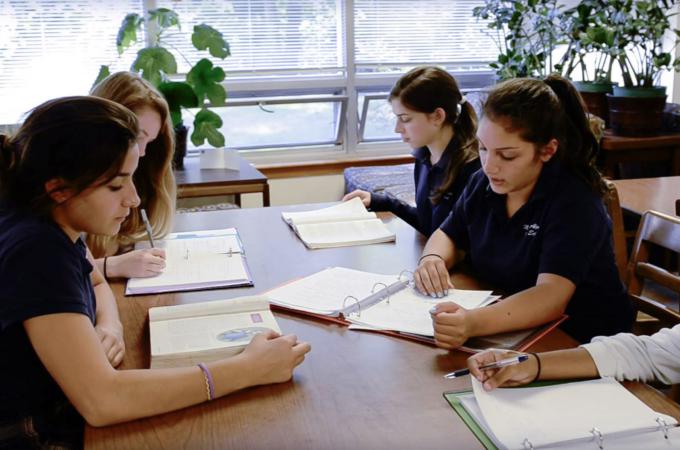Mt. Alvernia symposium prepares students for college research
NEWTON -- For a quarter of a century, an annual symposium has served as a rite of passage for students of Mt. Alvernia High School.
"It kind of feels like a huge stepping stone. In the Mt. Alvernia culture, symposium is a very big deal. So they like exaggerating how hard it is, scaring the underclassmen. But they all feel pretty great when it's over. They're pretty proud of their work," said English teacher Rebecca Brown, who took over the symposium program in 2010.
Seniors spend the second semester of the school year working on two research projects, one for English and another for history, which they present on a symposium night held shortly before graduation. Students who take an art elective also produce a work of art, which is displayed on the symposium night.
"It's really an entire semester dedicated to learning how to become a better writer, how to edit your own work and others' work, and form arguments and follow through with those arguments," said Jennifer Staysniak, the chair of the school's History Department.
For the English paper, students select an author, read three or four of the author's books totaling 1,000 pages, and write an analytical essay about the author's work. For history, students choose a topic that interests them, conduct independent research, and write a historical research paper.
"We just tell them, the main thing is to pick somebody you're passionate about for English and an area that you're really curious about for history," Brown said.
To avoid having students choose the same authors from year to year, students are not allowed to research an author that has been chosen in the past five to seven years.
"Each class tends to have a vibe and a point of interest," Staysniak said. She said her students tend to be influenced by popular culture, particularly film and television. For example, in recent years, shows like "Orange is the New Black" made her students curious about prison systems.
Most of the work is done independently, Staysniak said, though students check in with teachers for guidance and feedback. Each Monday, students submit a reading log for English and a research log for history. The teachers read their logs and return them with feedback.
"We're trying to teach them how to prepare for college on the one hand, but then also how to utilize teachers in the most appropriate ways for research," Staysniak said.
Brown said that as students revise their papers, she pairs them with each other based on what they need help improving. She said that students now use Google Docs to give each other feedback on their drafts.
"In part it's a continuation of the same analytical writing and critical reading skills they're developing over the course of their six years at Mt. Alvernia, but the other piece of it that's really exciting to watch is their expertise growing in an area," Brown said, adding that, "By the end, she's talking confidently about her point of view."
Staysniak said the symposium serves as an "equalizer," bringing together students who have always done well academically and students who have struggled. She said she hopes the experience shows her students "that history is not some stagnant topic."
"It's fun to see that shift in their mindset of what historians are and what they can do," Staysniak said.
Brown said that each September she gets a few emails from students who graduated the previous school year, telling her that the symposium project prepared them for their assignments in college.
"It's really satisfying to hear that," Brown said.



















